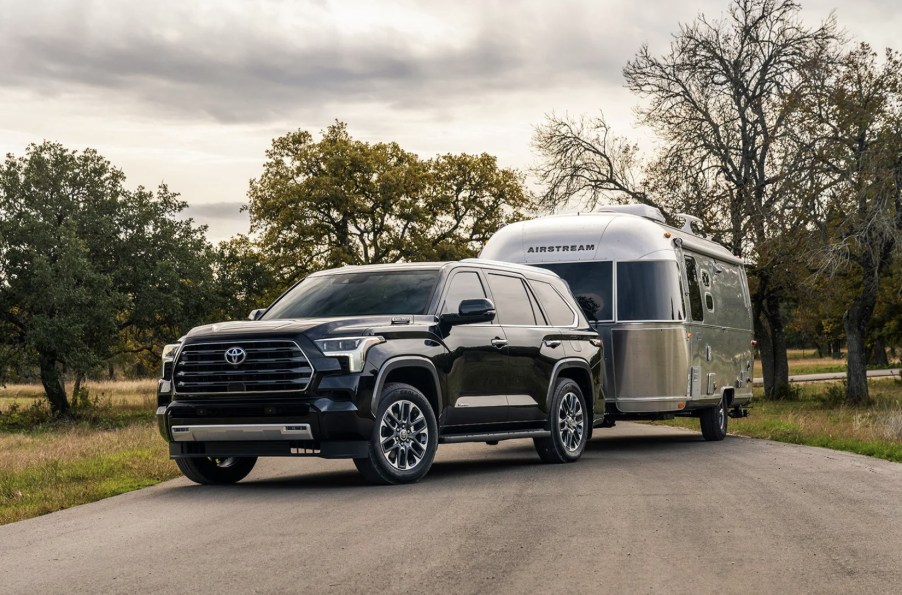
3 Most Common Toyota Sequoia Problems Reported by Hundreds of Real Owners
Even the best vehicles have their problems. Fortunately, we have sources like Repair Pal to give us the rundown on the most common issues owners have experienced. Furthermore, for the Toyota Sequoia full-size SUV, families probably want to avoid as many major mechanical issues as possible. Here are the most common Toyota Sequoia problems reported by hundreds of real owners.
Most common Toyota Sequoia problems

According to Repair Pal, the most common Toyota Sequoia problems are a lower ball joint issue, a failing oxygen sensor, and leaking exhaust manifolds. Moreover, the website compiles the most common issues reported by current and previous owners. There seems to be a recall for the most commonly reported problem, the lower ball joint issue. Users say eight different model years are impacted by the recall, including 2001 through 2008 Sequoias. Reportedly, the automaker will replace the ball joints under recall, so it’s a free repair for owners.
Repair pal says the replacement costs $337 to $554, so the free recall is undoubtedly the way to go. Thankfully, the most common problem with the full-size SUV is repairable for free. Over 130 people have reported this problem to RP.
Sequoia oxygen sensor failure

Next, Repair Pal users reported a failing oxygen sensor as the next most common Toyota Sequoia problem. According to hundreds of real owners, one or more oxygen sensors may fail, which results in an illuminated check engine light. RP says only six model years are affected, the 2001 through 2005 models and the 2008 Sequoia. In 2023, these models have an average of 155,377 miles on the odometer. As a result, we don’t expect most consumers to be looking to purchase one, but current owners might run into these issues.
Oxygen sensor replacement costs anywhere from $325 to $364 for a single unit. However, multiple can fail, resulting in multiplying that cost by the number of failing sensors. Over 70 people reported the same problem to RP.
Cracked and leaking exhaust manifold
The next most common problem with the Toyota Sequoia is a cracked and leaking exhaust manifold. According to owners, they first hear a ticking noise in the engine while driving. Upon investigation, it’s being caused by a cracked exhaust manifold, which then causes leaks. As a result, the longer it goes unrepaired, the more problems it may cause. If you’re hearing ticking from the engine, it’s best to check it out immediately. On average, owners experienced this problem at around 116,000 miles. It’s also only been reported for the 2001-2007 model years and the 2012 model.
Exhaust manifold replacement can cost anywhere from $1,148 to $1,373. Allowing it to leak for an extended amount of time is dangerous, so be sure to repair it as quickly as possible. Over 50 people have reported this problem to RP.
Is the Toyota Sequoia a good SUV?
Overall, the Toyota Sequoia is a good SUV. Many of its most common problems are only present in older model years. Starting with the 2001 model year through roughly 2008 is where most of the issues occur. Owners have not reported nearly as many issues with more recent model years. Repair Pal is an excellent resource for finding common problems with any make and model. We’re not surprised to see that a Toyota is reliable and doesn’t experience many problems even after so long. The most reported issue to RP is a recall, so remedying it is free and easy.



